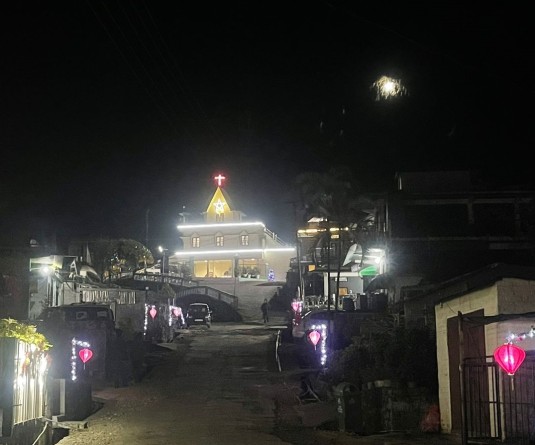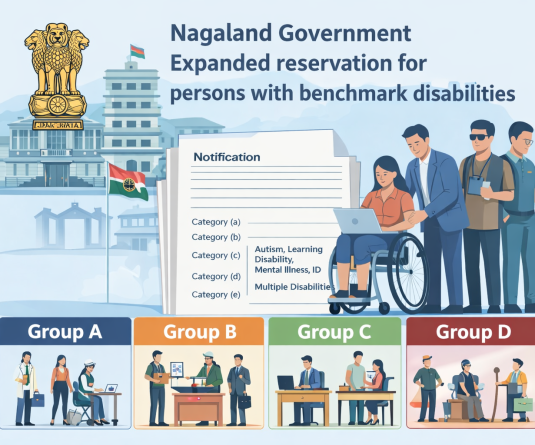
DIMAPUR, SEPTEMBER 2 (MExN): Nagaland Public Rights Awareness and Action Forum (NPRAAF) on Sunday indicated there is siphoning and diversion of the Targeted Public Distribution System (TPDS) under National Food Security Act 2013 (NFSA) in Nagaland.
With a view to make receipt of food grains under TPDS a legal right; Government of India enacted National Food Security Act which came into force w. e. f 5-7-2013. The Act provides for coverage of upto 75% of rural population and upto 50% of urban population for receiving subsidized food grains under TPDS, thus covering two-third population of the country.
The eligible persons identified by the states/UTs are entitled to receive 5 kgs of food grains per person per month at subsidized rate of Rs.3/2/1 per kg for rice/wheat/coarse grains respectively with their Priority House Hold (PHH) ration card, information and publicity cell, NPRAAF in a stated on Sunday.
The existing Antyodaya Anna Yojana (AAY) households, which constitute the poorest of poor, receive 35 kg of food grains per household per month. As on November 1, 2016, NFSA has been implemented on all the 36 states/UTs and they are receiving monthly allocation of food grains as per their entitlement under NFSA.
AAY reach beneficiaries only once in 2-3 month
Nagaland receives 16,625 Metric Ton (MT) annually with monthly allocation of 1385 MT. (19 lakh kg per month) and under PHH, Nagaland receives 76,331 MT with monthly allocation of 6360 MT (40 lakh kg per month).
However, the Forum, to its utter shock, found that in most village in Nagaland, AAY reach the beneficiaries only once in 2 or 3 month and there has been some instance of where the rice is sold to the beneficiaries at an higher price in the village.
The identified household under the scheme are entitled 35 kgs per month but in most village NPRAAF interacted with, AAY scheme is not known, it stated.
The Forum also revealed that in many villages, families receive only 3-4 kg of rice per person once in two or three month under PHH which is in violation to GoI guidelines under NFSA.
By calculation, the Forum concluded that the state cannot use up more than 13 (thirteen) lakh kg of rice even under AAY scheme alone even if it’s distributed 1 lakh kg to each districts of Nagaland.
Taking the instance of Dimapur district, the Forum said most village receive 25+25 = 50 kg per household once in two months under AAY which is also in violation to GoI guidelines. And most of the beneficiaries happen to be non-Nagas, it added.
Also highlighting a recent development, the Forum alleged that village leaders were asked to “hurriedly sign on a piece of blank paper and over a revenue stamp where above was written acknowledgement of having received unspecified (blank) amount of cash by the department officials.”
The village leaders were further made to sign inbox of column 9 and 10 of a particular document, without explaining the contents on the pretext of urgency requirement of their signatures. Such act of the officials is illegal, the Forum stated and liable under section 8 and 9 of prevention of corruption Act 1988 which is punishable with jail term and imprisonment.
Where does the levy sugar and iodized salts go?
The Forum also informed that the Nagaland government also receives monthly allocation of ‘levy sugar’ from the GoI through FCI about 1179 metric ton (MT) which is about 13,90,041 lakh kilograms and 7 rakes of Iodized salt (1 rakes carries 2,500 tonne of salt) annually. Levy sugar is the amount of sugar set aside from the total production for Public Distribution System.
However, NPRAAF said it has established that in most districts, levy sugar was distributed hardly four times in two years; while in many villages, distribution of levy sugar is unknown. That is, despite the supply of more than the state’s requirement by the GoI reaching every month. Distribution of iodized salt is also unknown, it added.
The Nagaland government also receives superior kerosene oil (SKO) on a monthly allocation of 1425 kiloliters (1 kiloliter = 1000 liters). However in-spite of abundance supply by the GoI, a family receives hardly 2 to 4 liter once after every two to three month.
While highlighting these irregularities, the Forum has appealed to the Nagaland government to implement Targeted Public Distribution System (TPDS) under National Food Security Act 2013 (NFSA) meaningfully to benefit the public, instead of merely showing implementation of the flagships programs on papers alone.
The Forum also informed that it will submit a memorandum to the Nagaland government seeking clarity on the implementation of the status of Targeted Public Distribution System (TPDS) under NFSA 2013 and public distribution under Non-NFSA.
It meanwhile urged the public to remain aware and vigilant of their due rights. It has cautioned that the State Government will soon face massive public uprising unless it change the corrupt ways and give public its due benefits as per the law.
Implement HPC report to curb multiple taxation
The Forum has also reminded the Nagaland government that the multiple taxation by Naga political groups on centrally sponsored flagships programmes, schemes and contracts continues to be a hindrance for the progress of the state.
It therefore renewed its appeal to the government to implement the High Power Committee (HPC) report to curb illegal and multiple taxation, which it asserted, is a long pending desire of the Nagas.






